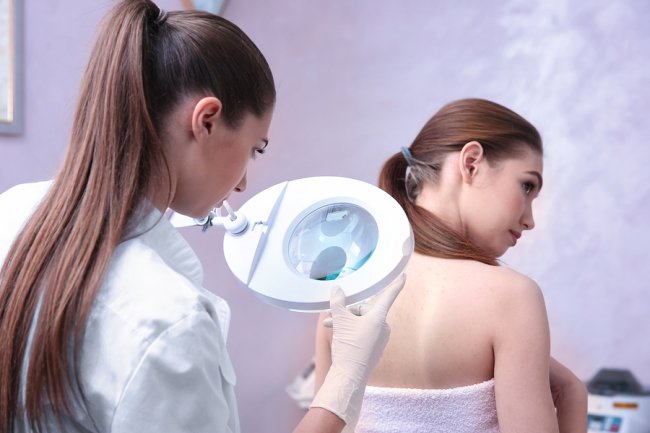What Is Grover’s Disease?

Grover’s disease is among the less common conditions treated in dermatology. Also known as transient acantholytic dermatosis, Grover’s disease is a rare skin disorder that is characterized by small lesions that usually appear on the back and chest. Continue reading to learn more about Grover’s disease.
Symptoms
Someone suffering from Grover’s disease typically has small lesions on their skin that are raised and firm. Other symptoms of this condition include itching and the separation of connective tissue in the outer layers of the skin. Also, it is common for patients with Grover’s disease to have blisters with a hair follicle in the affected area. These blisters develop in groups and are surrounded by swollen, red borders, and skin overgrowth forms over the skin eruptions. The symptoms of Grover’s disease occur most commonly on the back and chest, but they are also seen on the arms and legs.
Causes and Risk Factors
The cause of Grover’s disease is not known. Some dermatologists believe that this skin disorder is related to sweating and heat, and others suspect that it is associated with the fragility of sun-damaged skin. Grover’s disease is most common in males over age 40.
Diagnosis and Treatment
This skin condition is diagnosed through microscopic examination of the skin. Grover’s disease is a transient condition that can last for a few weeks to a few months. Some patients respond well to standard treatments and develop symptoms only once. However, Grover’s disease can be more difficult to treat in some patients, who may require long-term therapy and who suffer from several recurrences of their symptoms. If you are diagnosed with this condition, then your dermatologist may prescribe antihistamines, topical steroids, oral retinoids, selenium sulfide, or tetracycline to address your symptoms.
At Swinyer-Woseth Dermatology, we treat a broad range of skin issues in a comfortable and professional atmosphere. To schedule your appointment with one of our dermatologists in Salt Lake City, please call 801-266-8841.
